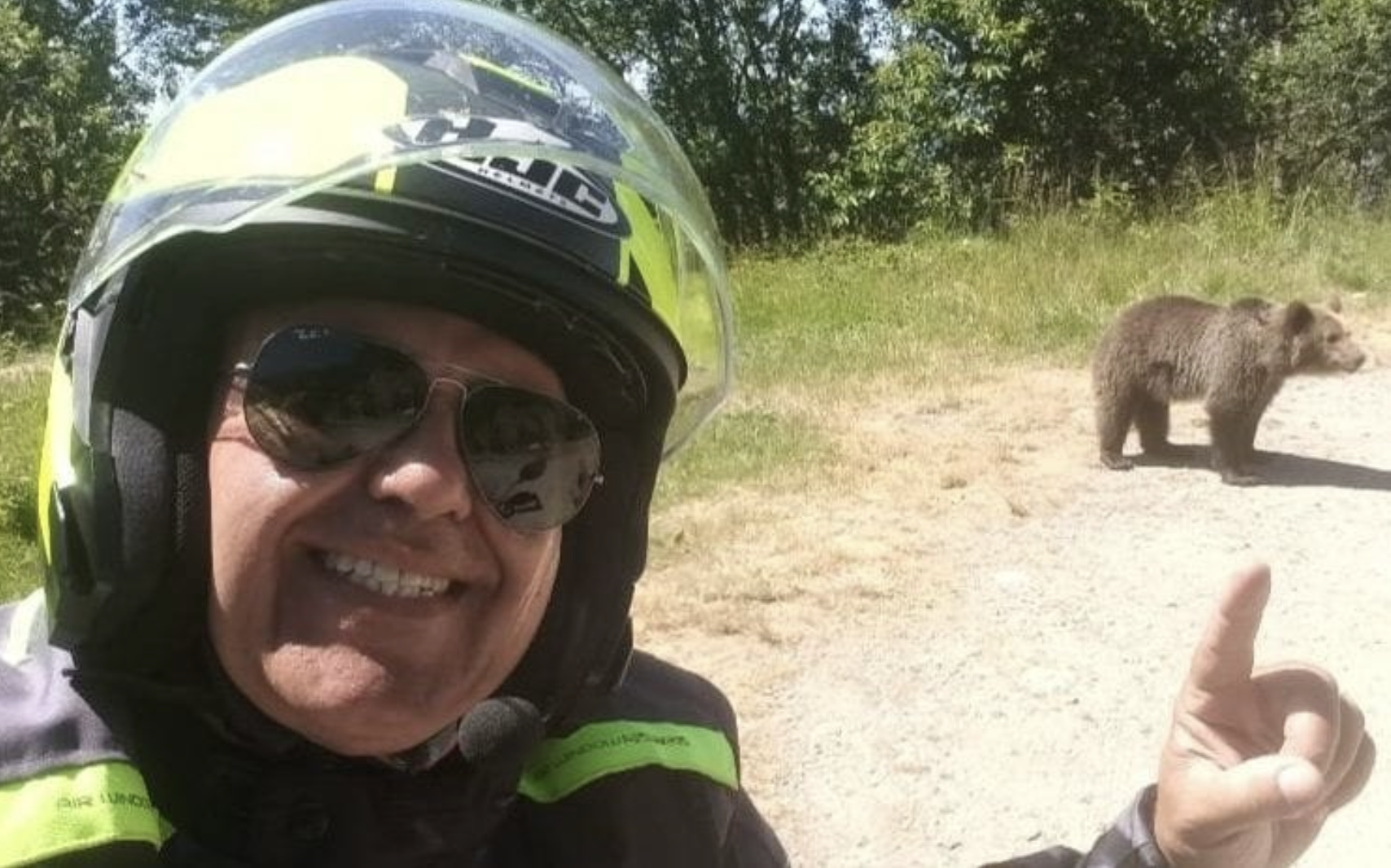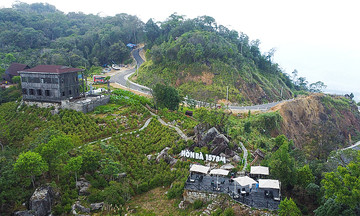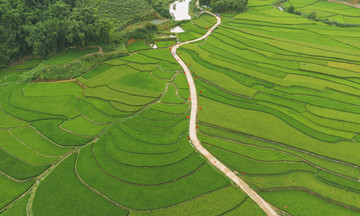The 48-year-old victim was dragged approximately 55 meters down a steep ravine by a female bear and fatally attacked. According to local media, the day before the incident, the tourist had taken several pictures of bears wandering by the roadside, including a selfie with one just a few meters behind him. He also filmed a video of himself driving past a bear standing at the roadside, saying, "Look at the bear, how beautiful".
 |
The tourist taking a selfie with the bear a day before the incident. Photo: Telegraph |
The tourist taking a selfie with the bear a day before the incident. Photo: Telegraph
Bear attacks have increased in Romania in recent years as the country struggles to control its rapidly growing brown bear population, estimated at between 10,000 and 13,000, the largest in the European Union.
In the Carpathian mountains alone, rangers estimate there are over 110 bears, far exceeding the safe level of around 25.
In May, three attacks were reported within 24 hours in the mountain region. A 74-year-old Spanish woman was injured while taking photos from her car with the window open. Two other tourists, from Poland and Germany, were also attacked in separate incidents.
Warning signs in English and Romanian are posted in the mountain area, advising against feeding bears or approaching them too closely. In 2024, the Romanian parliament doubled the annual legal hunting quota to 481 bears in an attempt to curb population growth.
However, wildlife organizations say humans are the root cause of the problem.
Cristian Papp, a representative of WWF Romania (World Wide Fund for Nature), said the issue is not the number of bears, but the increasing number that have become accustomed to human presence and see people as a food source.
"For example, hunters spread corn to lure wild boars, but this also attracts bears. I've seen bears eating corn alongside elk and deer many times", Papp said, adding that tourists need to stop feeding bears to take selfies.
The Carpathian mountains are one of Europe’s largest mountain systems, stretching across several countries in Central and Eastern Europe, including the Czech Republic, Slovakia, Poland, Hungary, Ukraine, Serbia, and Romania. At approximately 1,500 km, the Carpathians are the second-longest mountain range in Europe after the Alps.
In Romania, the Carpathians cover almost one-third of the country and are considered the backbone of its topography. The area is known for its primeval forests, remote valleys, and rich flora and fauna, and is home to many rare wild animals such as brown bears, gray wolves, lynx, and golden eagles.
Tuan Anh (The Telegraph)












